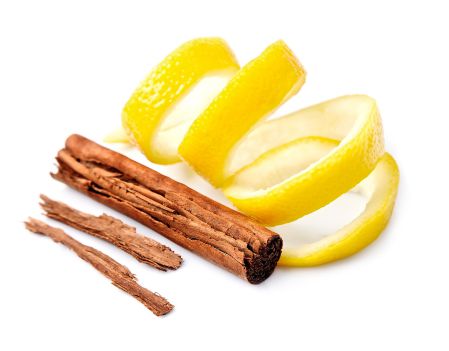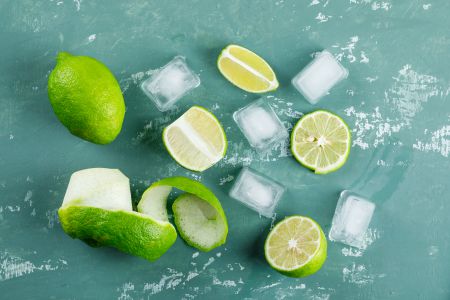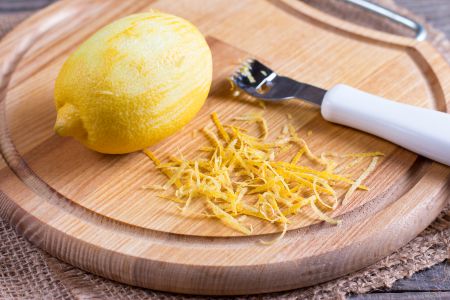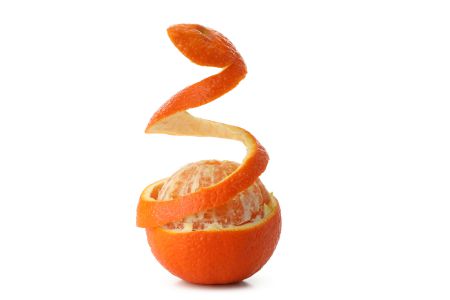Citrus peel is basically the outer protective layer or the skin of citrus fruits such as orange, lemon, lime grapes or sour orange. Citrus fruits are composed of various beneficial nutrients and their consumption has profound health benefits. Whereas, processing of citrus fruits produce large number of peels and residues which are generally discarded as waste but they contain significant amount of dietary fibre, flavonoids and phenolic compounds, hence they should be reused as they are important source of nutraceuticals. Their easy availability and low-cost features facilitate the preparation of less expensive dietary supplements. Several researches have shown that the citrus peels, which are generally considered as waste can provide an effective, environment friendly and low cost platform for the production of supplementary nutrition (Rafiq et al., 2018).
Nutritional overview
- Citrus peel contains very less amount of carbohydrate whereas the dietary fibre (polysaccharide) content of citrus peel is significantly high
- It is completely free from fat and thus considered as low calorigenic food (does not provide much calorie)
- It does not contain any proteins
- It is rich in vitamin C and contains various trace elements like calcium, potassium and magnesium
- It is completely packed with flavonoids and phenolic compounds, which act as potent antioxidant and anti-inflammatory substances
- Citrus peel contains various bioactive component like limonene (a phytochemical) which exerts strong anti-carcinogenic effects, iso-limonene, linalool, decanal and citral

Preparation of citrus peel extracts
Extract of citrus peel is considered as a significant natural source of antioxidant and for enhancing the nutritive value of citrus peels, the peel extract is prepared. Consumption of citrus peel extract is comparatively more beneficial than the consumption of only citrus peel. This extract can be prepared commercially or can also be prepared in home. The easiest process of preparing citrus peel extract is described below –
- At first, the citrus fruits should be washed properly
- Then it should be dried
- After that, the peel of the citrus fruits should be removed. Sharp knife can be used for peeling purpose
- Then the peel should be placed in a small jar
- Alcohol (ethanol or methanol) should be added until the peel gets covered by about one inch. (whereas commercially this extraction is done by using methanol, ethanol, diethyl ether, dichloromethane, hexane and acetone)
- Then the jar should be covered by using a tight-fitting lid and stored it in a cool place for few weeks
- After that peel should be strained carefully from alcohol and the alcohol which is retained in the jar can be consumed as peel extract

Health benefits

Antioxidant property
- Vitamin C, flavonoid and phenolic compounds of citrus peel act as strong antioxidant
- It helps to protect the body from oxidative damages caused by free radicals
- It has seen that free radicals are responsible for damaging several cellular components like DNA, RNA, proteins and lipid contents of body. Consumption of citrus peel or its extract helps to reduces the concentration of free radicals and prevents harmful damages of body, which helps to increase the life expectancy
Anti-carcinogenic property
- Flavonoid and D-limonene components of citrus peel have anti-carcinogenic activities. They help to prevent the growth of malignant cells and their metastasis
- Vitamin C of citrus peel also helps to enhance the activity of white blood cells which are responsible for eliminating mutated cancer cells
- Consumption of citrus peel or citrus peel extract is beneficial especially for preventing stomach, prostate and colon cancers
Antimicrobial property
- Citrus peel has antibacterial as well as antifungal activities
- It helps to inhibit the growth of harmful bacteria (especially antibiotic resistant bacteria) within host
- It has seen that it often helps in the complete destruction of bacteria but not necessarily their spores
- It also helps to inhibit the growth of drug resistant fungus, which are responsible for skin infections


Role on immune system
- Vitamin C and flavonoid components of citrus peel help to enhance immunological responses of the body
- It helps to stimulate the phagocytosis process and also helps to enhance the activity of WBC, macrophages, natural killer cells, which help to increase the resistant power of the body
- It helps to reduce the susceptibility of infectious diseases
Role on cardiovascular system
- The flavonoids, Vitamin C and pectin (fibre) contents of citrus peel are associated with reducing the risk of developing cardiovascular diseases
- The principal causative factors of cardiac diseases are obesity, hypertension and increased level of cholesterol (especially LDL). Consumption of foods prepared by citrus peels or citrus peel extracts helps to produce lesser calorie as well as helps to reduce the level of LDL in body. This facilitates weight reduction and also prevents the prevalence of atherosclerosis
- Anti-inflammatory factors of citrus peel also help to prevent inflammatory damages of the heart that promotes cardiac health
Role on oral health
- Gum diseases, dental disorders, cavities are common oral problems caused by bacterial infestation especially by Streptococcus mutans
- Antibacterial property of citrus peel helps to prevent such diseases and promotes oral health

Role on gastrointestinal health
- Fibre content of citrus peel helps in digestion, hydrolysis and absorption of food stuffs
- It helps to improve colonic health by enhancing colonic fermentation and peristalsis
- It also helps in easy defecation by increasing bulkiness of stool and prevents constipation
Application of citrus peel and its extract
Citrus peel contains several beneficial nutrients hence they can be well utilized for consumption and for preparing supplementary products. Apart from that it can be reused in several ways, which include –
- The peel of citrus fruits especially lemon can be used as a substitute of mint or gum. It can be chewed for a while, which helps to freshen the breath
- The alpha hydroxyl acid content of citrus peel (lemon peel) helps to brighten the skin. It can be used by adding some sugar and olive oil within it for better outcome
- Citrus peel can be soaked within vinegar for two weeks and then can be used as an effective cleanser by mixing with water in 1:1 ratio
- It can also be used as a natural air freshener. If the peel is placed in a pot on a low flame and allow for simmering, then it helps to release natural oil into water that produces a good smell in air when evaporates
- Citrus peel powder can be prepared and can be added to several recipes for making them dry and pulverize
- It can also use for cleaning refrigerator and microwave

Citrus waste and its future perspective
- Several researches have shown that citrus fruits are rich in essential minerals, vitamins, fibres and phytochemicals that include carotenoids, polyphenolics, alkaloids and nitrogenous compounds. The peels of those fruits also contain these nutrients and hence can be reused by pharmaceutical, cosmetics, nutraceuticals and food industries (Mahato et al., 2018)
- Citrus peel has several nutraceutical benefits, which include antihypertensive, antibacterial, antifungal, antihypertensive, diuretic, anti-catarrhal, anti-diabetic, anti-cancerous, capillary protector and anti-ulcer activities and have potential health benefits. These features can be utilized by researchers to carry out new experiments to find out new ways of disease prevention (Chhikara et al., 2018)

Source:
Chhikara, N., Kour, R., Jaglan, S., Gupta, P., Gat, Y. and Panghal, A., 2018. Citrus medica: nutritional, phytochemical composition and health benefits–a review. Food & function, 9(4), pp.1978-1992.
Ma, G., Zhang, L., Sugiura, M. and Kato, M., 2020. Citrus and health. In The Genus Citrus (pp. 495-511). Woodhead Publishing.
Mahato, N., Sharma, K., Sinha, M. and Cho, M.H., 2018. Citrus waste derived nutra-/pharmaceuticals for health benefits: Current trends and future perspectives. Journal of Functional Foods, 40, pp.307-316.
Rafiq, S., Kaul, R., Sofi, S.A., Bashir, N., Nazir, F. and Nayik, G.A., 2018. Citrus peel as a source of functional ingredient: A review. Journal of the Saudi Society of Agricultural Sciences, 17(4), pp.351-358.
Selvamuthukumaran, M., Boobalan, M.S. and Shi, J., 2017. Bioactive components in citrus fruits and their health benefits. Phytochemicals in citrus: applications in functional foods.
Singh, B., Singh, J.P., Kaur, A. and Singh, N., 2020. Phenolic composition, antioxidant potential and health benefits of citrus peel. Food Research International, p.109114.
Ye, X. ed., 2017. Phytochemicals in citrus: Applications in functional foods. CRC Press.




